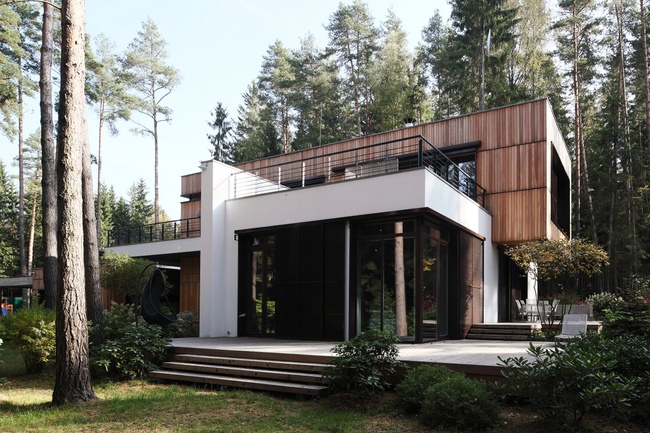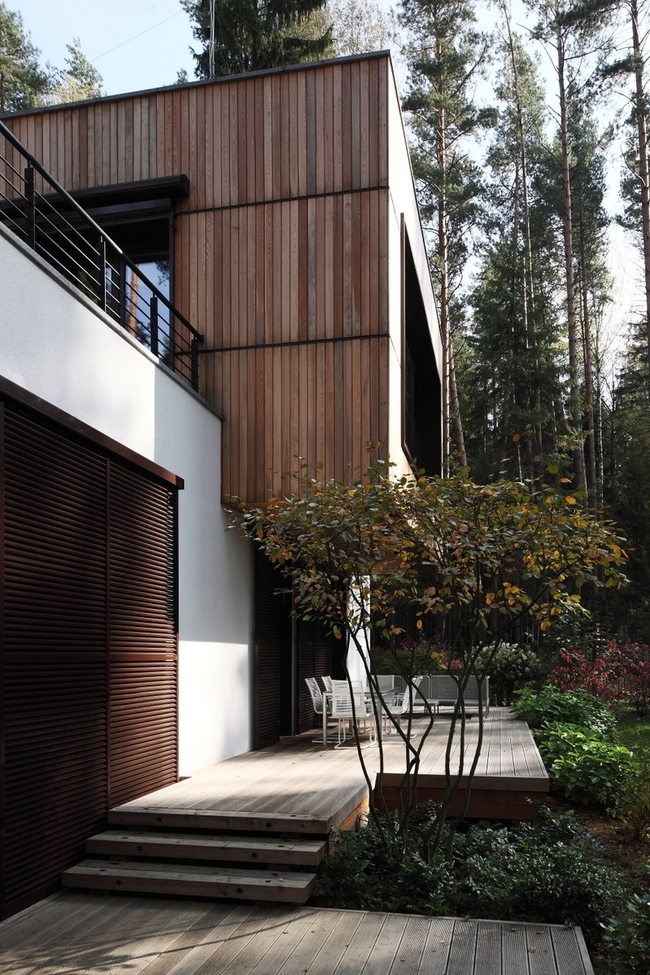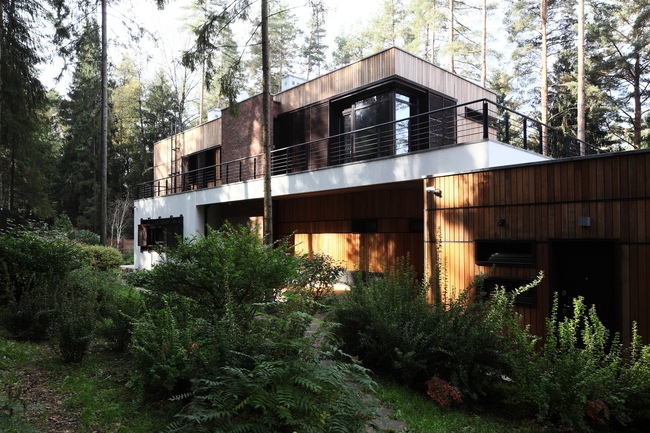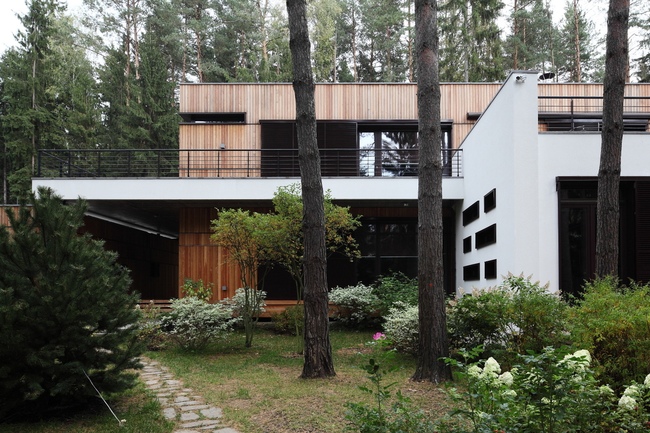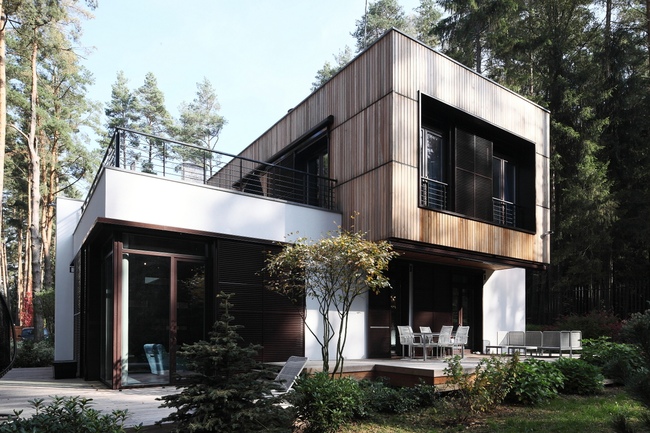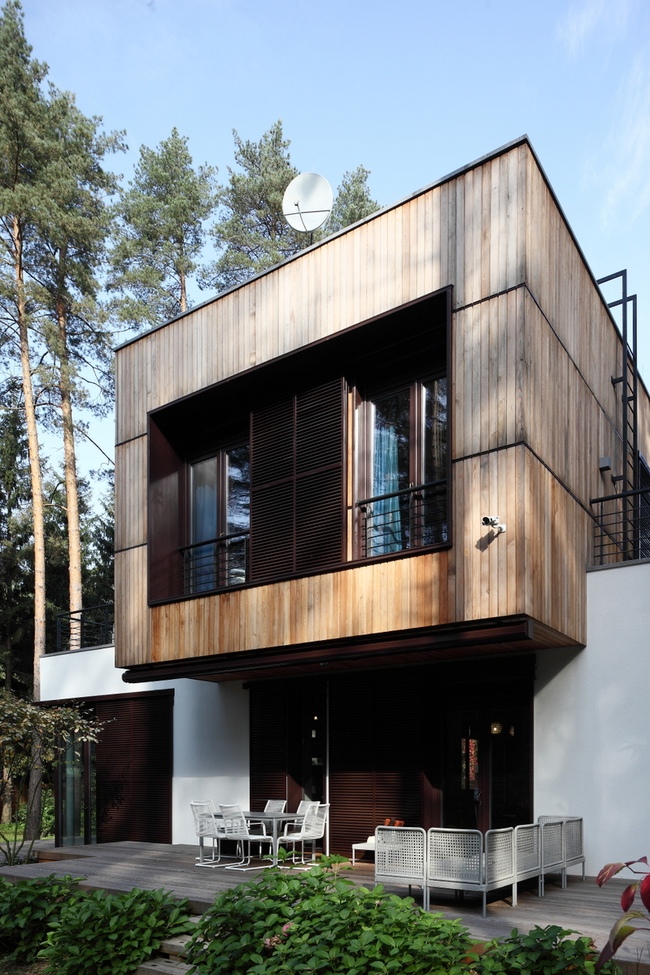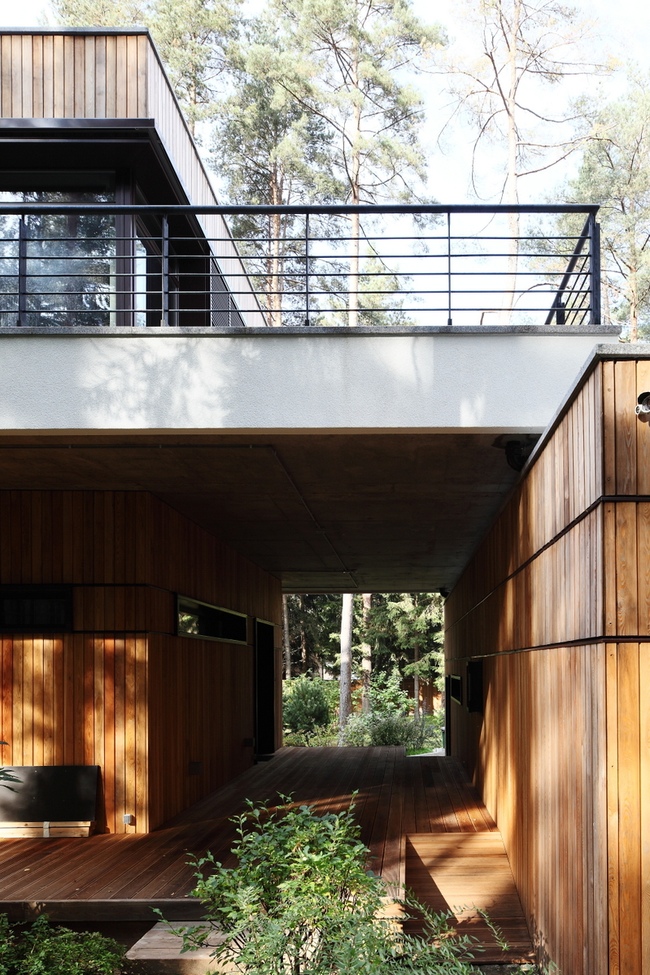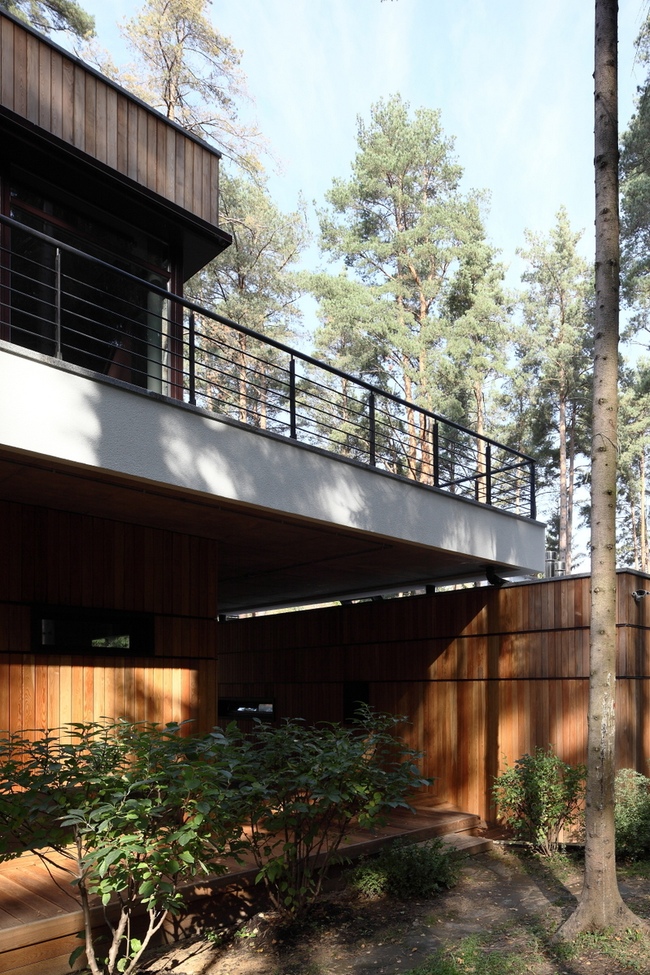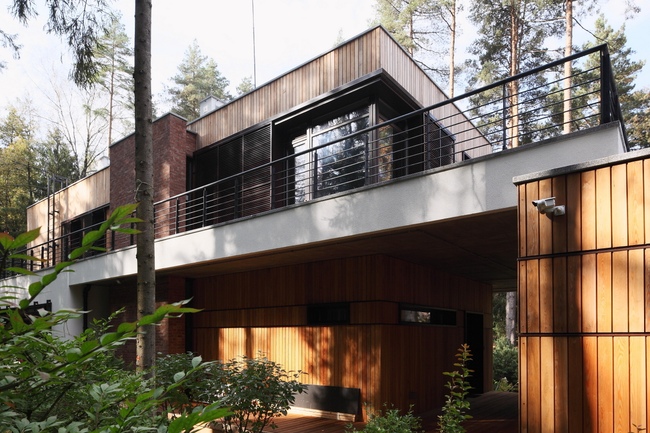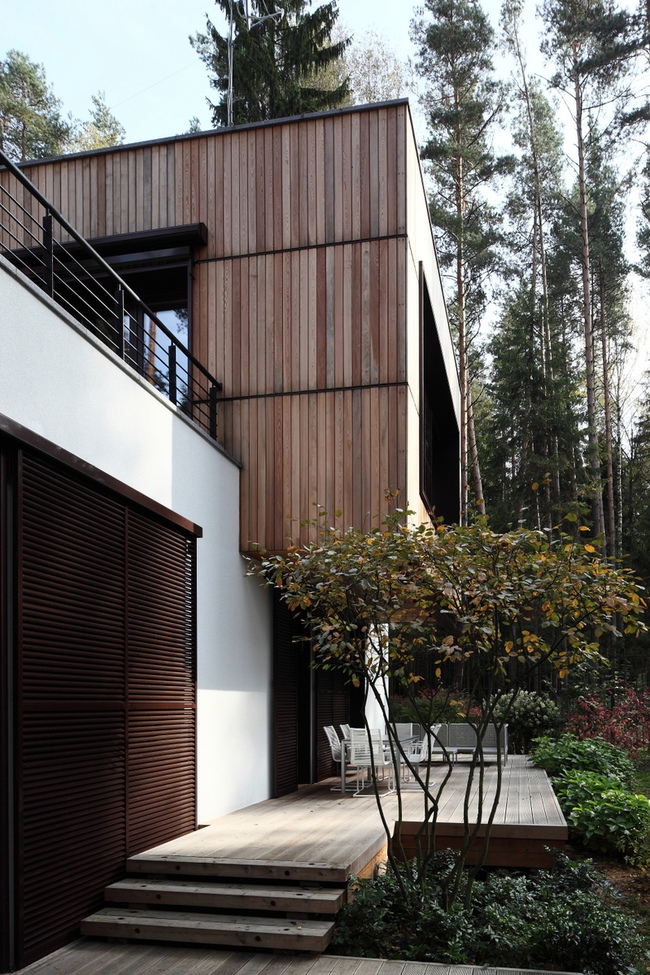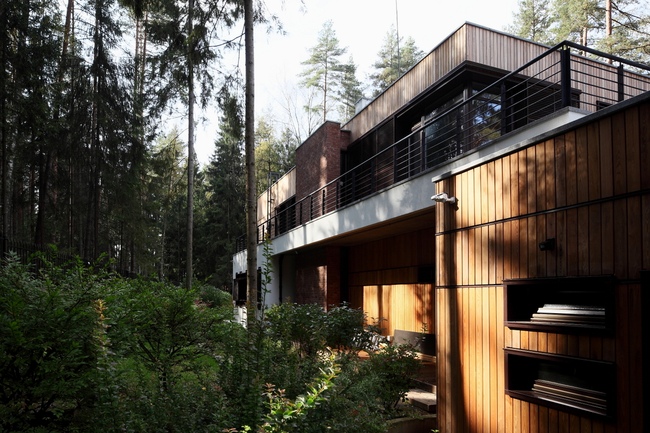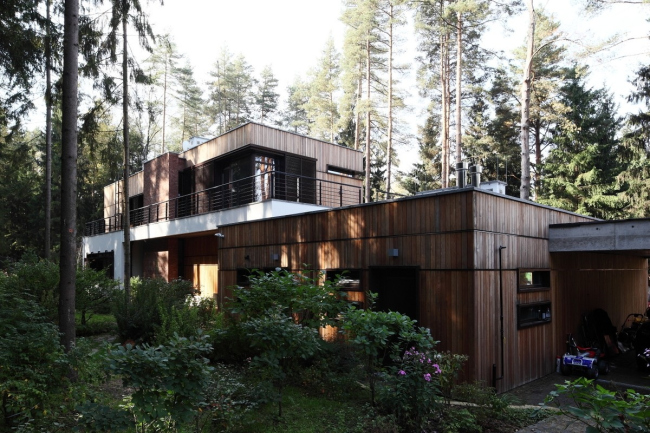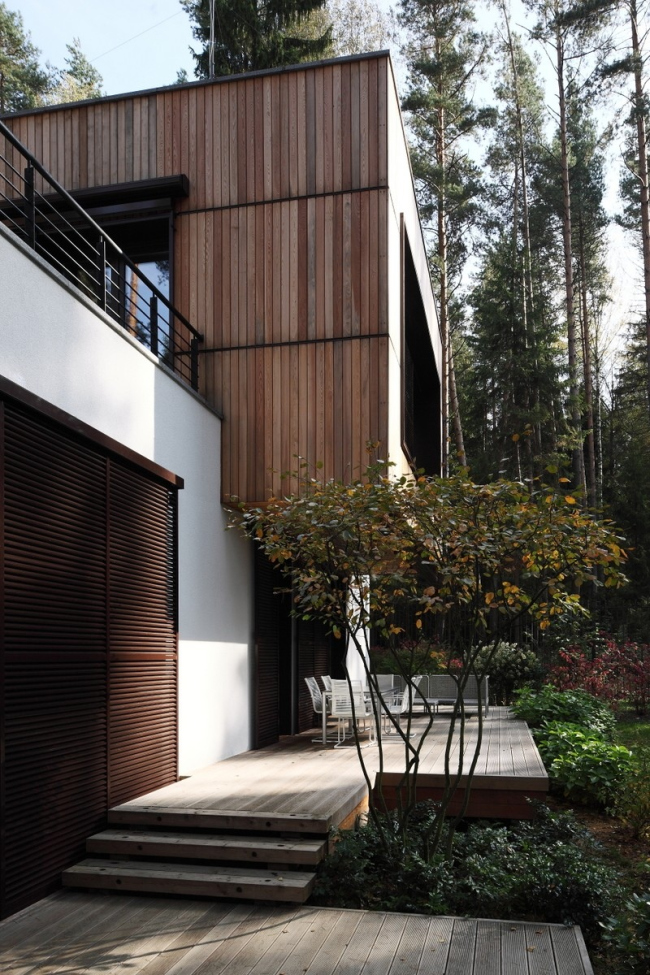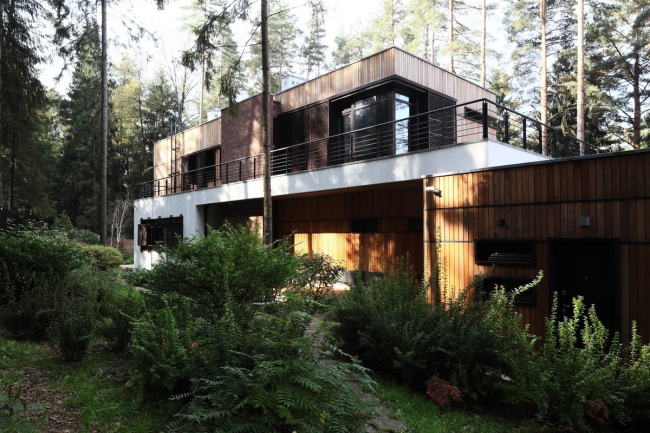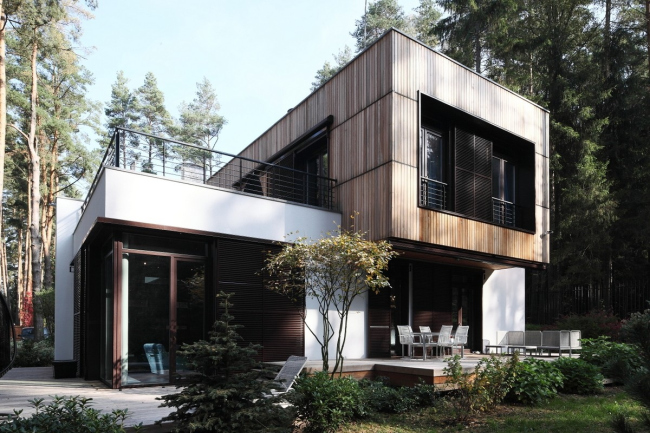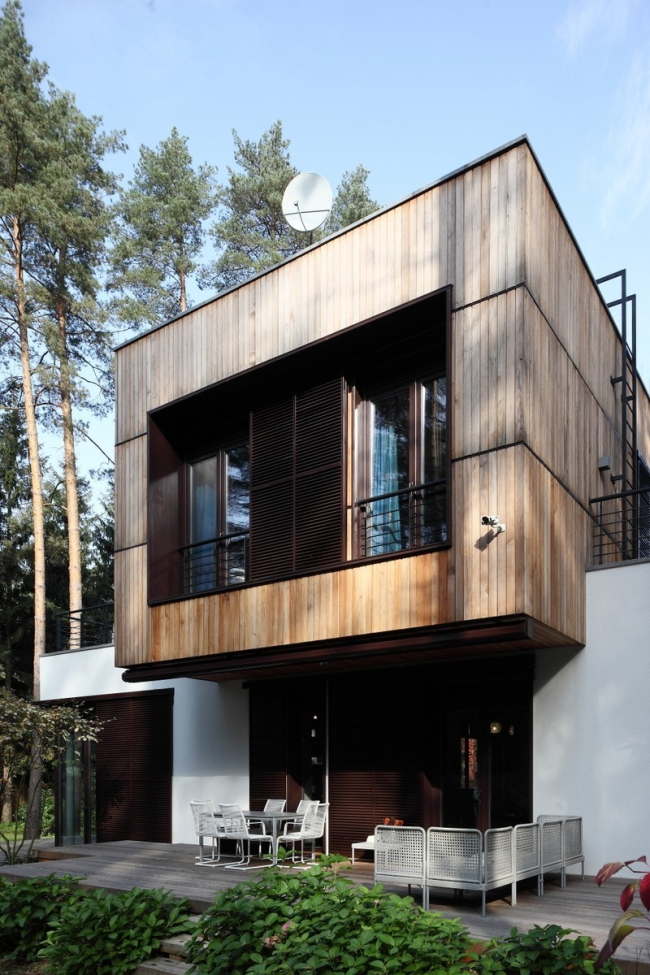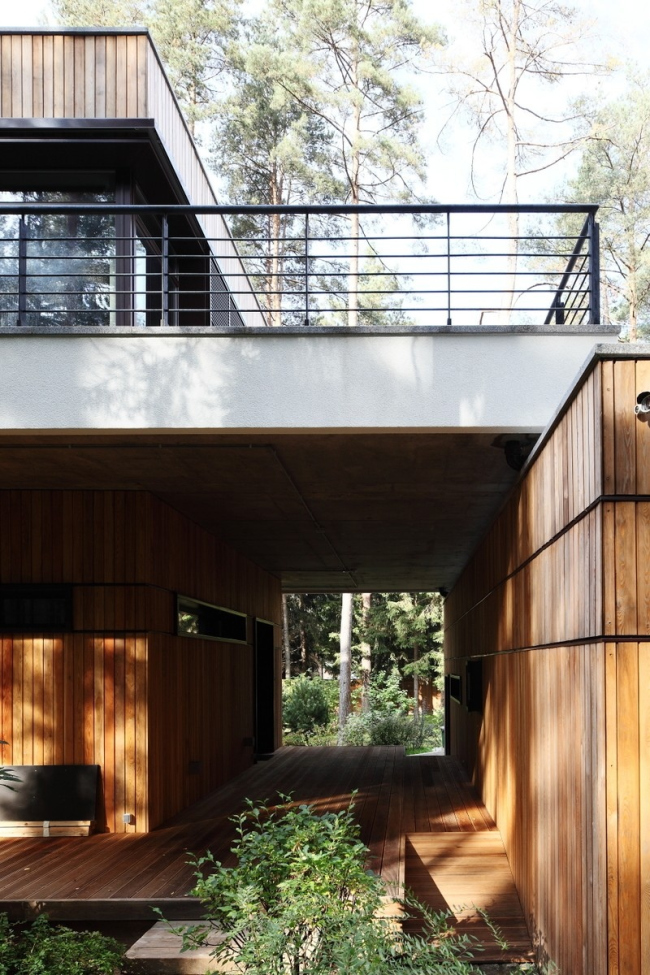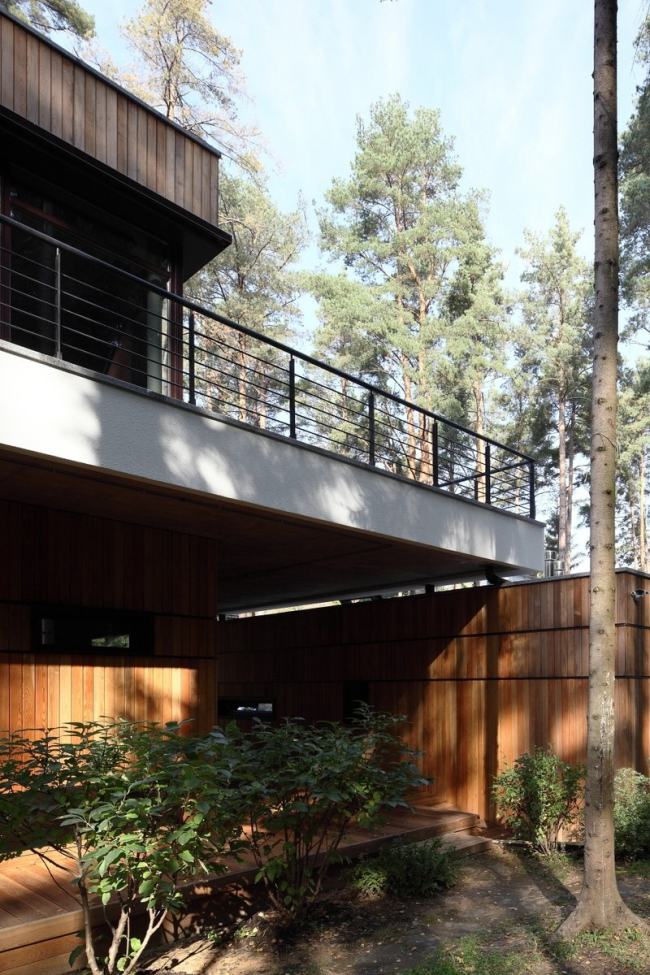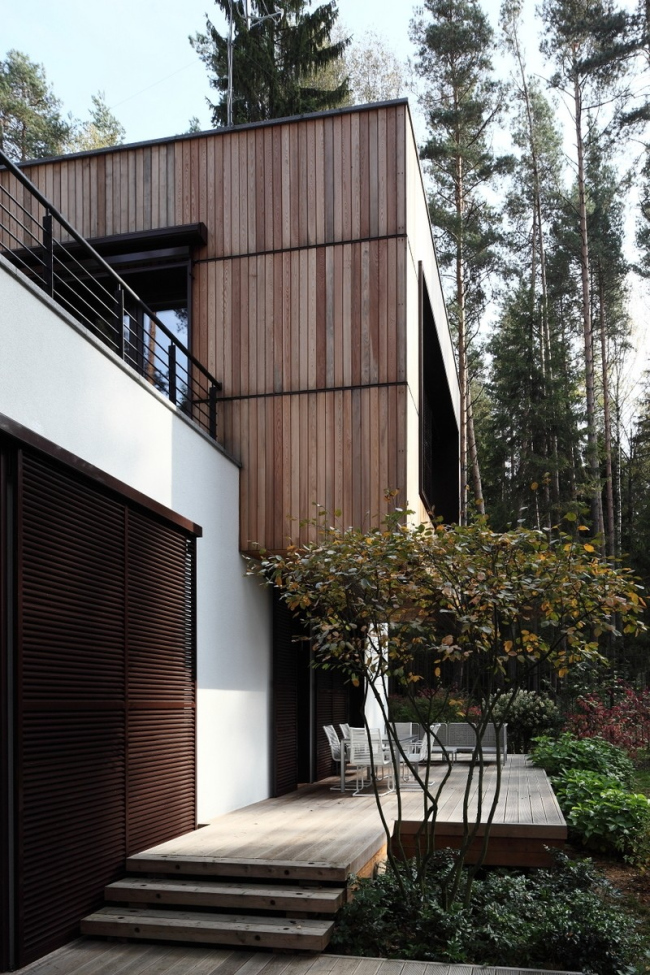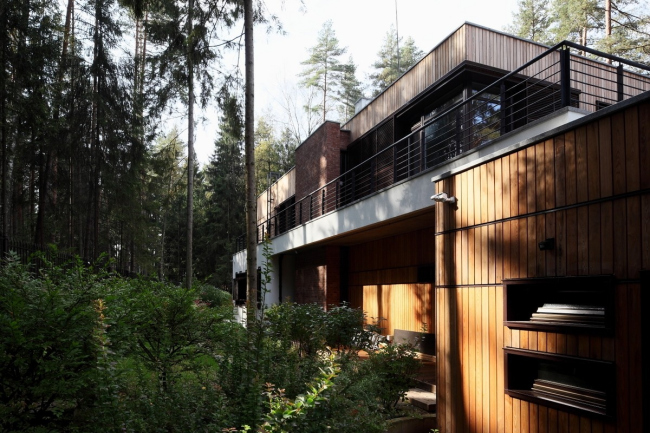|
Published on Archi.ru (https://archi.ru) |
|
| 10.04.2013 | |
|
A Hut in a Pine Forest |
|
|
Anna Martovitskaya |
|
| Architect: | |
| Roman Leonidov | |
| Studio: | |
| Studio of Roman Leonidov | |
|
This laconic volume hidden amidst the pine trees is the smallest-area one of all the houses ever built by Roman Leonidov. This forested site is located fairly far away from
The self-sufficient verticals of the pine trees are balanced off by
Roman Leonidov with a composition that is horizontally oriented. And, while the
garage is treated as a separate "cube", the residential part gets a
more sophisticated geometry. Into the main two-storey volume, coated, just like
the garage, with larch board, the architect cuts in a concrete parallelepiped
at the level of the first floor. Its brutalism (especially as opposed to the
wood) is offset by a large number of windows, both panoramic ones and narrow
slits, coupled with snow-white stucco. In this "insert" the architect
places the dining-and-living room, and its roof is used to support the terrace
of the second floor. In order to provide for all the premises of the upper
level to get open-air recreation places of their own, Roman Leonidov maximally
extends the slab of the intermediate floor, and in order to separate the
"children" and "adult" terraces, introduces an additional
vertical wall. The final "architectonic" chord is shifting the
horizontal slab in such a way that with its free edge it covers the roof of the
garage, while on the facade on the other side it gets an expressive cantilever.
At a casual glance at the house it seems that this shift was left still unfixed
- "barging in" onto the territory of the garage, the snow-white slab
almost hovers over it, even though this impression is actually deceptive:
between the base of the terrace and the roof of the technical volume the
architect runs thin supporting pillars.
This shift not only makes the overall composition more dynamic but also
plays an important functional part, helping to create a covered passageway
between the main house and the garage. Thanks to such a solution, the house
that is small as it is (300 sqm together with the garage), looks still more
fractured, "stretched" over the site, and hence even more gracefully
fitting in with the landscape: the trees and the bushes not only get reflected
in its numerous windows, they look as if they are breaking into it. By the way,
it is this roof-covered passage that the entrance into the house is made in. As
Roman Leonidov explains, by this he was able to kill two birds with one stone:
he clearly articulated the entrance area on the main facade of the house and at
the same time avoided any possible pretentiousness in its design. In fact, this
passage that connects the front and the back yards of the house serves as its
front entrance whose simplicity and naturalness are meant to be enhanced by the
wood coating. The same kind of board is used to coat all the terraces of the
first floor, and, while the terraces of the second floor get the railings in
accordance with the safety regulations, the first floor ones are devoid of them
completely - they are separated from the plot with but two or three stairs that
are enveloped in verdure in the summertime.
As was already mentioned, the main facade material here is the larch
board that now is glistening with the honey hue of freshly-sawn timber. With
time, however, it will change its color into silver gray and will in fact melt
in with the trunks of the pine trees that surround the house. Apart from glass
and concrete that have also become fully-fledged components of the
architectural image of this project, Roman Leonidov used here bricks as well -
a wall of this very material completes the back facade of the cottage, as if
offsetting the expressiveness of the white block of the living room.
An important part in the image of the house is also played by the window
shutters, made of thin laths of stained oak. The thing is that one of the
mandatory conditions put by the commissioner was the availability of the
opportunity to completely shut all the windows. Fulfilling this condition with
the traditional kind of shutters proved challenging, and this is why the
architect chose to use their up-to-date automatic analogues. Their chocolate-colored
surface perfectly matches both the wooden coating of the house and the wine-red
color of its bricks, while the horizontal orientation of the laths is supported
by thin steel rods that are also used as a railing of the upper terraces. When
the windows are open the blinds are perceived as a decorative element of the
facade deign - but in the "shuttered" state they create an extra
ethereal shell that securely protects the house from the sun and from prying
eyes without making an impression of blind armor which perfectly matches the
democratic character of this building as a whole.
NoneNoneNoneNoneNoneNoneNoneNoneNoneNoneNoneNoneNone |
|
